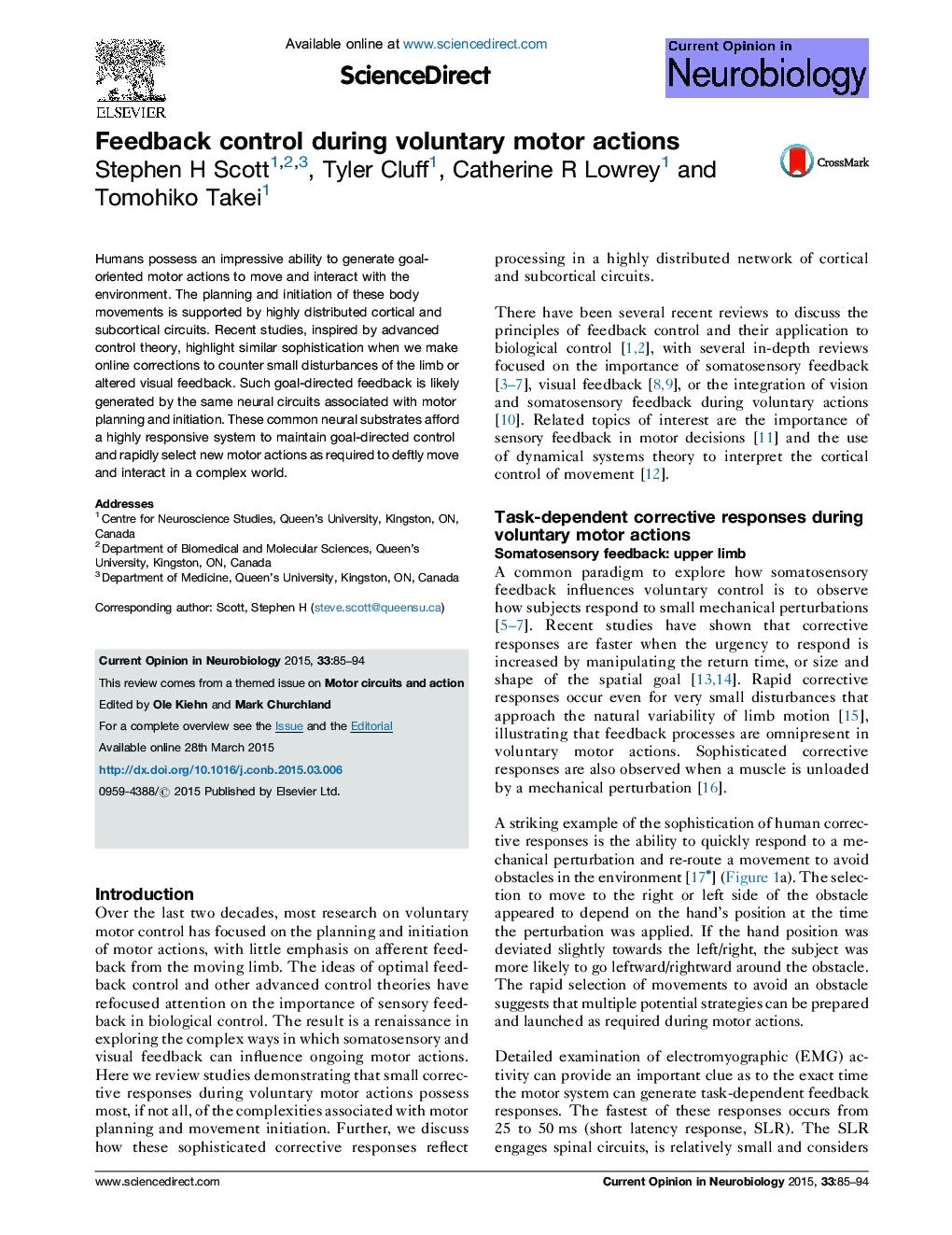| Article ID | Journal | Published Year | Pages | File Type |
|---|---|---|---|---|
| 6266476 | Current Opinion in Neurobiology | 2015 | 10 Pages |
â¢Advanced control theory highlights the role of sensory feedback for motor function.â¢Goal-directed feedback begins in muscle activity â¼60 ms after the limb is disturbed.â¢Goal-directed feedback begins in muscle activity â¼100 ms after vision of the limb or goal is altered.â¢Frontoparietal and subcortical brain circuits generate these goal-directed responses.
Humans possess an impressive ability to generate goal-oriented motor actions to move and interact with the environment. The planning and initiation of these body movements is supported by highly distributed cortical and subcortical circuits. Recent studies, inspired by advanced control theory, highlight similar sophistication when we make online corrections to counter small disturbances of the limb or altered visual feedback. Such goal-directed feedback is likely generated by the same neural circuits associated with motor planning and initiation. These common neural substrates afford a highly responsive system to maintain goal-directed control and rapidly select new motor actions as required to deftly move and interact in a complex world.
